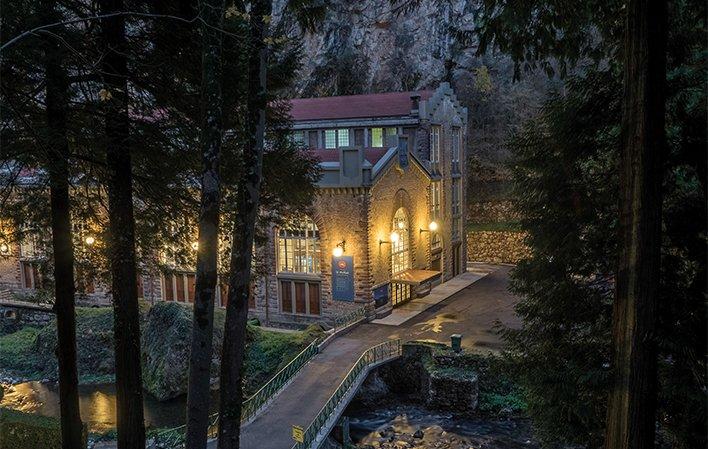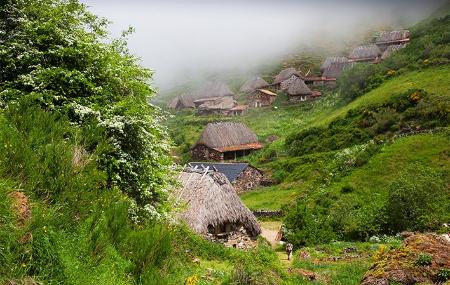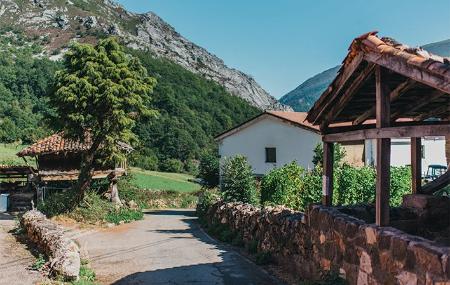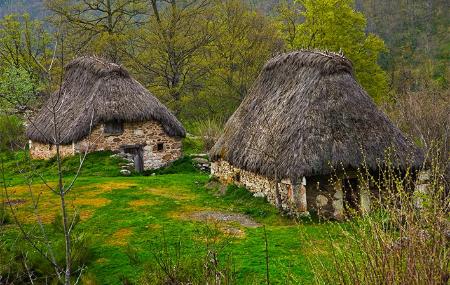
Through the valleys of Somiedo
- Address Somiedo Asturias Centre
- Distance Distance: 50 kms
- Difficulty Difficulty: Half
- Mountain bike Mountain bike: 1 day
- Start point Start point: Pola de Somiedo
- Route type Route type: mtb
- Tour type Tour type: Linear
- Layout of the route Layout of the route: Download kml, Download gpx
Route
Pola de Somiedo - Pola de Somiedo 50
This is a circular cycling tour, starting and finishing at the same point. There will be hard stretches that may be difficult for people who are not used to cycling, but it is beautiful and peaceful, especially from the turn-off to Villar de Vildas. It runs entirely on tarmac and is therefore suitable for all types of bicycles.
This is a route of great scenic attraction that starts in Pola de Somiedo, the capital of the council of Somiedo, and reaches the village of Villar de Vildas (cycling through the valleys of the river Somiedo and the river Pigüeña), and then returns along the same route. This entire route is part of the Somiedo Natural Park (since 1988).
The initial departure from Pola de Somiedo is not a problem because of its downhill profile, following the course of the river Somiedo along the AS-227 road. Shortly after passing the recreational area of La Malva (where there is a fountain), we find the first hydroelectric facility we are going to see on this excursion: the hydroelectric power station of La Malva. Its main building is a characteristic construction of industrial architecture dating from 1915. This power station, together with the power stations of La Riera (Somiedo) and Miranda (Belmonte), make up the integral hydraulic exploitation system of the Pigüeña-Somiedo river basin, which begins in the Somiedo lakes and culminates in a 22-kilometre tunnel that carries the water to the Miranda power station.
In addition to the aforementioned building, the La Malva reservoir itself is well worth a visit. In 1913, the Sociedad Civil Privada de "Saltos de Agua de Somiedo" was set up for the purpose of exploiting the lakes and rivers of the municipality. In 1917, the La Malva power station, which supplied electricity to Oviedo and Gijón, began operating. In 1919, the company "Hidroeléctrica del Cantábrico - Saltos de Agua de Somiedo" was set up, the forerunner of the company "Hidroeléctrica del Cantábrico".
After this first stop, the route continues towards the town of Aguasmestas, passing through villages such as Castro, La Riera and Santiago. There are several tunnels on this section, so it is essential to carry lights and reflective clothing to see and be seen.
Once you reach Aguasmestas, a town on the border with the council of Belmonte, you must turn off onto a local road towards Villar de Vildas. This road, which is almost entirely uphill, has some steep descents at times, which means that you need to keep your brakes well adjusted.
In this section we climb up the beautiful valley of the river Pigüeña, with areas dedicated to livestock farming on the right bank and forests (such as the forest of Los Arroxones) on the left.
Shortly after the turning, the village of Santullano and then Robledo are left on the right. Next, cross Pigüeña (the village with the same name as the river that has carved out this valley) and then Cores. The next stop is the village of Villar de Vildas, which was awarded the "Exemplary Village of Asturias" prize in 2004. The jury highlighted, for its award, the maintenance of traditional customs and the typical architecture of a mountain village. Among its narrow streets, there are a good number of granaries, granaries and two-storey houses with the stables below and the living area above.
The Pigueña Valley Route (PR.AS 14.1) starts here, where you can visit the Braña de La Pornacal, one of the largest and best preserved in the Somiedo Natural Park. A braña is the name given to the mountain area where livestock graze in the late summer pastures; in some cases there are usually small huts where shepherds take shelter from storms or spend the night. The La Pornacal hut is made up of a group of thirty-four huts, rectangular in shape and covered with plant material, known as "teito" huts. After this brief introduction, we invite you to take a closer look at these constructions and their inhabitants, the vaqueiros de alzada.
If you choose to make this ascent to the hut (bear in mind the hours of daylight), we suggest eating in the hut of La Pornacal itself. If, on the other hand, you do not do it, we suggest the village of Villar de Vildas for lunch. It is time to return. To do so, we must retrace our steps along the same path we came from. Once in Pola de Somiedo, the end of today's route, we can walk around its streets and places.
Map
Itinerary
Pola de Somiedo - Aguasmestas - Santullano - Pigüeña - Villar de Vildas - Braña de La Pornacal - Pola de Somiedo



